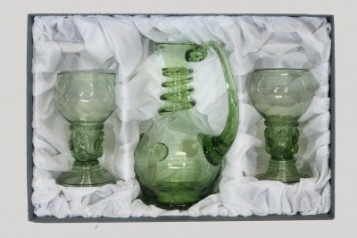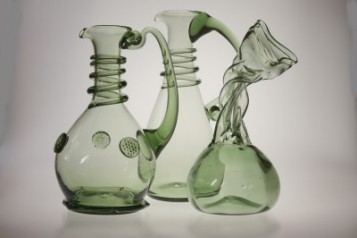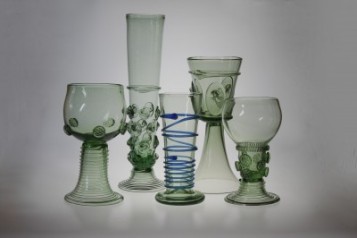Forest glass - replicas of green glass
Forest green glass is called glass with green color and bubbles. This is a handicraft production, and the bubbles and slight inequalities that have already been given today by the green forest glass are its magic of ancient times. Replicas of the historic green glass are typical traces of the bottoms of the pots, which are separated from the sticker and various types of decorations - raspberries, split sticks, drawn drops, etc. They were not just a decorative element but also fulfilled the practical meaning. At the time of the greatest use of forest green glass, it was mainly dishwashed with hands, and the broken surface of glasses guaranteed that the glass did not slip in them.
In Czech glassmaking, the production of forest glass was renowned in the 14th and 15th centuries and was commonly produced until the beginning of the 18th century. The production of blue glass dyed by cobalt, which was a raw material for silver mining, is documented in Bohemia. At first, the blue glass was used only as a decor of green glass, and only from the middle of the 16th century the production of blue glass was introduced. From the Venetian glassworks, the production of red glass, which was first used primarily for the decoration of clear glass, came to us.
The name "Forest" received this green glass according to the glassworks that originated in the forests where there were enough materials for the melting of the glass and especially the wood for heating in the glass furnaces. The characteristic greenish tint is given by the content of iron oxide contained in glass sand. The glassworks produced mostly the already mentioned greenish glass with bubbles and dirt in enamel, which was caused by minimal cleaning of raw materials and imperfect melting of enamel.







